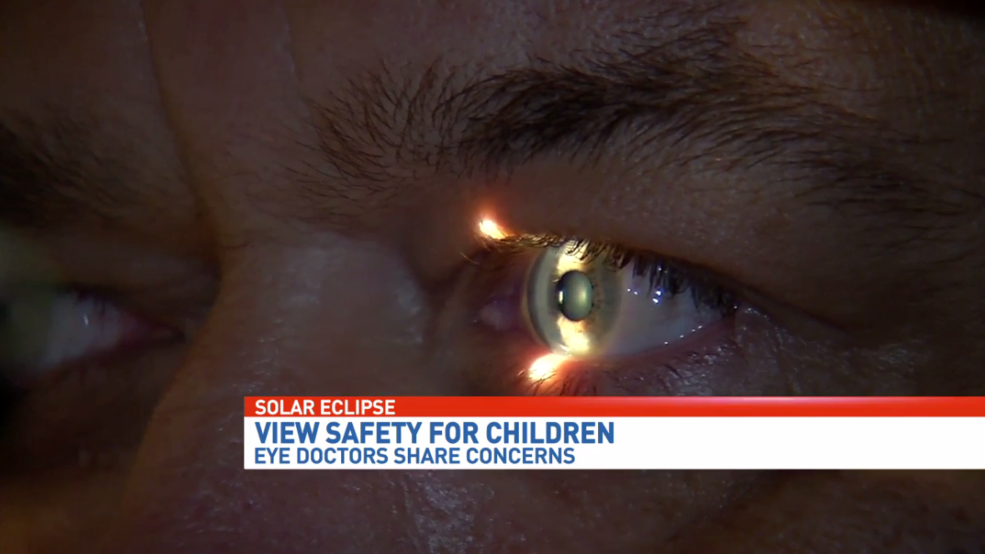The Dangers of Looking at a Solar Eclipse: What You Need to Know

Introduction
Witnessing a solar eclipse can be a breathtaking experience, as the moon obscures the sun, casting a shadow over the Earth. However, this celestial event carries significant risks, primarily related to eye safety. Many people underestimate the dangers of looking directly at the sun during an eclipse, often leading to serious, irreversible damage to their vision. In this article, we will explore the dangers of looking at a solar eclipse, the science behind the phenomenon, preventive measures, and expert recommendations to ensure a safe viewing experience.
Understanding Solar Eclipses
What is a Solar Eclipse?
A solar eclipse occurs when the moon passes between the Earth and the sun, temporarily blocking the sun's light. There are three main types of solar eclipses:
- Total Solar Eclipse: The moon completely covers the sun.
- Partial Solar Eclipse: Only a portion of the sun is obscured.
- Annular Solar Eclipse: The moon covers the center of the sun, leaving a ring-like appearance.
Each type presents unique viewing experiences but also carries inherent risks if viewed improperly.
The Science of Eye Damage
When looking at the sun, even during an eclipse, the intense light can cause solar retinopathy, a condition where the retina is damaged by exposure to solar radiation. This damage is often painless but can lead to permanent vision loss.
Key facts about solar retinopathy:
- Light Sensitivity: The retina is sensitive to light; looking at the sun can overwhelm it.
- Duration of Exposure: Damage can occur in seconds, even during a brief glance.
- Symptoms: Symptoms may not appear immediately, often taking hours or days to manifest.
The Risks of Direct Sunlight Exposure
Why Is Looking at the Sun Dangerous?
- Intense UV Radiation: The sun emits ultraviolet (UV) rays that can harm the eyes. During an eclipse, even a small sliver of sunlight can emit enough UV radiation to damage the retina.
- Pupil Dilation: During an eclipse, the surrounding light diminishes, causing pupils to dilate. This dilation allows more light to enter the eye, increasing the risk of damage when the sun reappears.
- Increased Risk of Permanent Damage: Studies indicate that a significant percentage of people who view a solar eclipse without proper protection suffer from permanent eye damage.
Statistics to Consider
- According to the American Academy of Ophthalmology, approximately 1 in 1,000 people who view the sun without protection will suffer serious eye damage during an eclipse.
- Research from the National Eye Institute indicates that up to 60% of individuals who viewed the last total solar eclipse reported experiencing some form of visual disturbance.
Safe Viewing Practices
How to Safely Observe a Solar Eclipse
To enjoy a solar eclipse without risking your vision, it’s essential to follow these guidelines:
-
Use Proper Solar Viewing Glasses:
- Ensure they meet the ISO 12312-2 safety standard.
- Regular sunglasses, no matter how dark, are not sufficient.
-
Use Solar Filters for Optical Devices:
- Telescopes, binoculars, or cameras should have solar filters specifically designed for eclipse viewing.
-
Pinhole Projector Method:
- Create a simple pinhole projector using a piece of cardboard to project the sun’s image onto a flat surface.
-
Attend Organized Viewing Events:
- Join local astronomy clubs or public events where safe viewing equipment is provided.
-
Educate Others:
- Share safety tips with friends and family to ensure everyone understands the risks.
Myth-Busting Common Misconceptions
-
Myth: It’s safe to look at a solar eclipse if it's cloudy.
- Fact: UV rays can still reach your eyes, causing damage even if the sun is obscured by clouds.
-
Myth: You can look at a total solar eclipse without protection.
- Fact: Only during the brief period of totality (when the sun is completely covered) is it safe to look without protection. This lasts for a few minutes at most.
Conclusion
Experiencing a solar eclipse can be one of nature's most awe-inspiring events, but it’s crucial to prioritize eye safety. Understanding the dangers of looking at a solar eclipse and adhering to safe viewing practices can prevent irreversible damage to your vision. Always invest in proper solar viewing glasses, educate yourself and others, and consider alternative viewing methods to enjoy this celestial phenomenon safely.
As we look forward to the next solar eclipse, let’s not only marvel at the beauty of the universe but also ensure we protect our most precious sense—our sight. Remember, safety should always come first.
By following these guidelines, you can enjoy the wonders of a solar eclipse while keeping your eyes safe. So, mark your calendars, gather your solar glasses, and prepare for an unforgettable experience—safely!